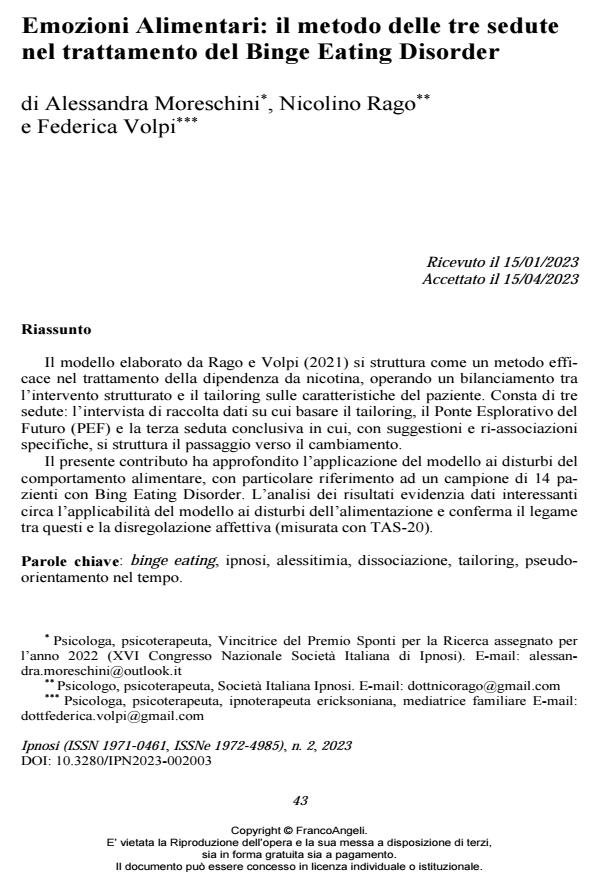Food Emotions: the three-session method in the treatment of Binge Eating Disorder
Journal title IPNOSI
Author/s Alessandra Moreschini, Nicolino Rago, Federica Volpi
Publishing Year 2024 Issue 2023/2
Language Italian Pages 14 P. 43-56 File size 236 KB
DOI 10.3280/IPN2023-002003
DOI is like a bar code for intellectual property: to have more infomation
click here
Below, you can see the article first page
If you want to buy this article in PDF format, you can do it, following the instructions to buy download credits

FrancoAngeli is member of Publishers International Linking Association, Inc (PILA), a not-for-profit association which run the CrossRef service enabling links to and from online scholarly content.
The model developed by Rago and Volpi (2021) is structured as an effec-tive method in the treatment of nicotine addiction, balancing between struc-tured intervention and tailoring on the patient's characteristics. It consists of three sessions: the data collection interview on which to base the tailoring, the Exploratory Bridge of the Future (PEF) and the third final session in which, with specific suggestions and re-associations, the transition towards change is structured. This contribution has explored the application of the model to eat-ing disorders, with particular reference to a sample of 14 patients with Bing Eating Disorder. The analysis of the results highlights interesting data about the applicability of the model to eating disorders and confirms the link be-tween these and affective dysregulation (measured with TAS-20).
Keywords: binge eating, hypnosis, alexithymia, dissociation, tailoring, pseu-do‐orientation in time.
Alessandra Moreschini, Nicolino Rago, Federica Volpi, Emozioni Alimentari: il metodo delle tre sedute nel trattamento del Binge Eating Disorder in "IPNOSI" 2/2023, pp 43-56, DOI: 10.3280/IPN2023-002003